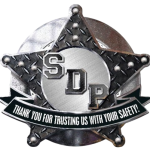You’ve probably heard the phrase “stranger danger” before, but keeping yourself safe isn’t just about avoiding people you don’t know. It’s about understanding how to recognize risky situations, trust your instincts, and take smart action when something doesn’t feel right. Whether you’re walking to school, playing at the park, or chatting online, you’ll want to know these essential safety strategies that could make all the difference in protecting yourself from potential threats.
Your Safety Snapshot
- Trust your instincts and immediately seek help from trusted adults if someone makes you feel scared or uncomfortable.
- Never accept rides, gifts, or food from strangers, even if they claim to know your parents.
- Stay in groups when in public places and avoid wandering off alone, especially in parks or malls.
- Learn and memorize a family code word that only trusted adults would know if they need to pick you up.
- Yell loudly “This isn’t my parent!” or “Help!” if someone tries to force you to go somewhere.
Understanding Who Is a Stranger
Although you may think you know what a stranger looks like, it’s not always as simple as spotting someone who appears scary or dangerous. A stranger can be young or old, well-dressed or casual, and might even seem friendly and approachable.
They’re simply anyone you and your family don’t know personally, regardless of how they look or act.
You’ll need to understand that some strangers might pretend to know your parents, offer you treats, or ask for help finding a lost pet.
Even if they’re wearing a uniform or working in a store, they’re still strangers if you don’t know them personally.
It’s important to remember that dangerous people often look completely normal and can be quite charming, which is why you shouldn’t judge solely by appearances. Many families choose to equip their children with personal security alarms to enhance safety in uncertain situations.
The Safe Adult Network: Building Trust Circles
While it is crucial to be cautious around strangers, you’ll also need to know who you can trust and turn to for help. Start by creating your own trusted circle of adults, including parents, teachers, and other family members who’ll always have your back when you’re feeling unsafe or uncomfortable.
| Safe Adult Examples | Why They’re Trustworthy |
|---|---|
| Parents/Guardians | They’re your primary protectors |
| Teachers/Counselors | They’re trained to help kids |
| Trusted Relatives | They’re approved by your parents |
Remember to discuss your safe adult network with your parents, ensuring they know and approve of everyone in your circle. When you’re out in public, these trusted adults can become your go-to people if you need assistance or feel threatened. Keep their contact information handy, and don’t hesitate to reach out when something doesn’t feel right. Additionally, consider carrying a self-defense tool like a stun gun for added personal safety.
Body Language and Personal Boundaries
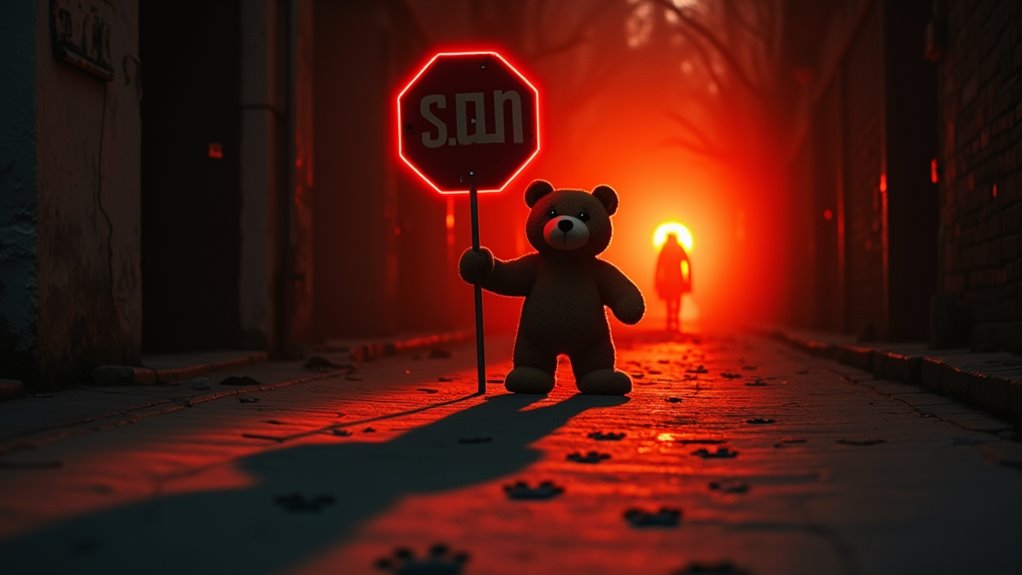
Understanding body language and setting personal boundaries are essential skills that’ll help you stay safe and confident when dealing with others.
When someone makes you feel uncomfortable, trust your instincts and pay attention to warning signs like someone standing too close, staring intensely, or blocking your path. You’ve got the right to maintain your personal space and say “no” firmly when you’re not comfortable.
Learn to recognize threatening body language, such as crossed arms, clenched fists, or aggressive posture, and respond by creating distance between yourself and the person.
Your body language matters too – stand tall, make eye contact when speaking, and use a strong, clear voice to show confidence. Additionally, carrying personal safety devices like a Keychain Alarm with Light can provide an extra layer of security if you ever feel threatened.
If someone violates your boundaries, don’t hesitate to move away and seek help from a trusted adult.
Safe Words and Family Code Phrases
Establishing secret words and code phrases with your family can create a powerful safety system that might save your life in dangerous situations. Choose a unique word that’s easy to remember but wouldn’t come up in normal conversation, like “rainbow zebra” or “purple pancakes,” and share it only with trusted family members.
If someone claims your parents sent them to pick you up, they’ll need to know this password, or you shouldn’t go with them.
You can also create special phrases that signal distress, like “I forgot to feed the goldfish” (even if you don’t have one), which tells your family you’re uncomfortable or need help.
Make sure everyone in your family knows these codes and practices using them regularly, so they become second nature when you really need them.
Digital Safety in the Online World
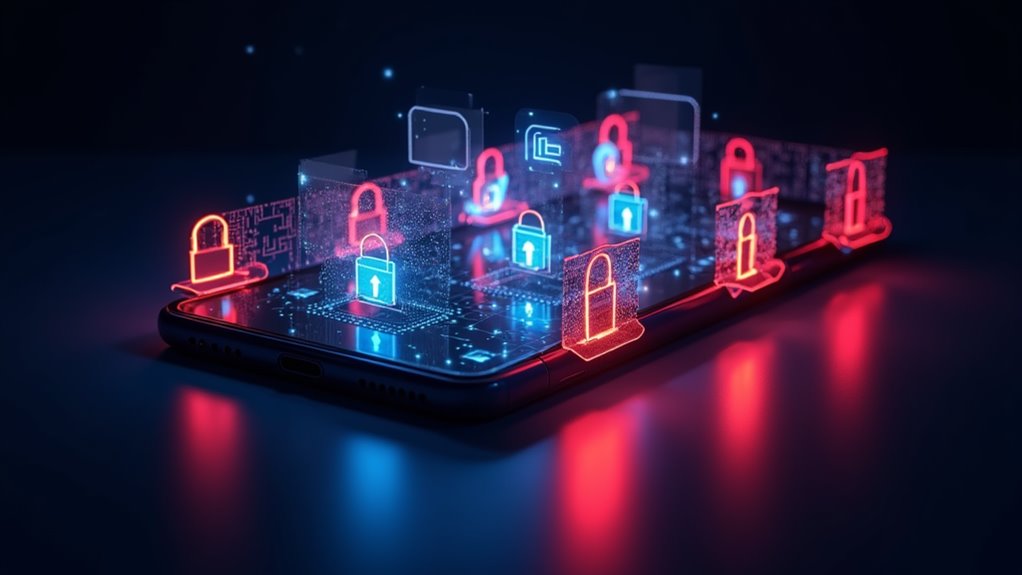
In today’s digital world, young people face dangers that can be just as serious as those in the real world. You’ll need to protect yourself by following some essential online safety rules, like never sharing personal information with strangers and being careful about the photos you post.
Don’t accept friend requests from people you don’t know in real life, and remember that someone online mightn’t be who they claim to be. If you’re gaming or chatting online, don’t use your real name or tell others where you live, go to school, or hang out.
Make sure you’ve got strong passwords that include numbers and special characters, and don’t share them with anyone except your parents. If someone makes you feel uncomfortable online, tell a trusted adult right away.
Smart Responses to Common Lures
While predators often use similar tricks to lure kids into dangerous situations, you can stay safe by recognizing these common tactics and knowing exactly how to respond.
If someone claims there’s an emergency with your family, don’t go with them – instead, ask for your family’s secret code word.
When a stranger offers you candy or asks for help finding a lost pet, that’s a red flag; walk away quickly and tell a trusted adult.
If someone tries to pressure you into getting into their car, yell “NO!” as loudly as you can and run to the nearest safe place, like a store or neighbor’s house.
Safe Routes and Buddy Systems
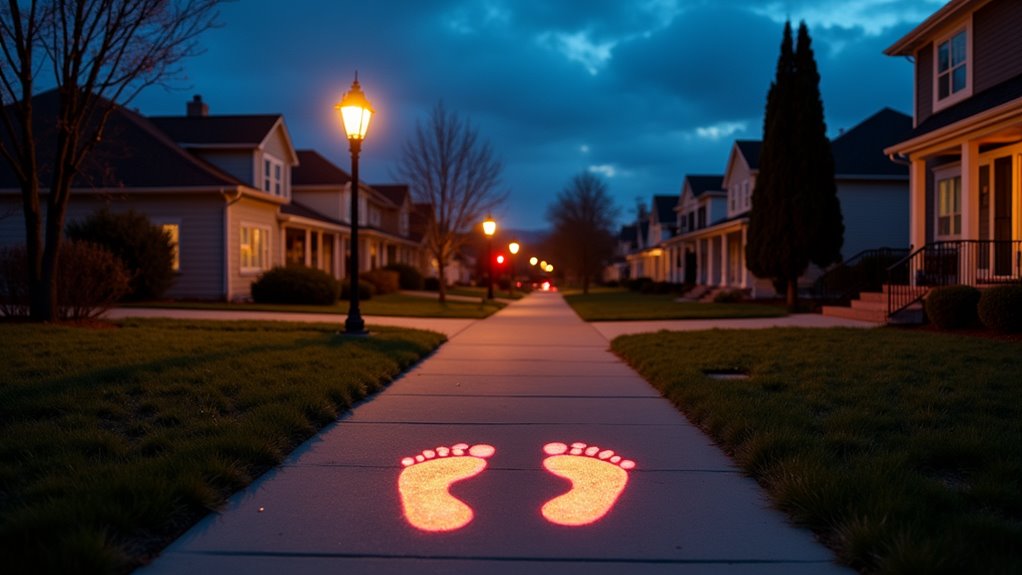
Planning your daily routes and always traveling with a buddy form two of the most powerful defenses against dangerous situations. You’ll want to map out your regular paths to school, friends’ houses, and activities, making sure you’re familiar with safe zones like stores, libraries, and trusted neighbors’ homes along the way.
| Safety Route Tips | Buddy System Guidelines |
|---|---|
| Choose well-lit paths | Partner with classmates |
| Avoid shortcuts | Stay together until safe |
| Know escape routes | Share contact numbers |
| Map safe zones | Tell adults your plans |
When you’re walking with your buddy, you’ll feel more confident and be less likely to become a target. Don’t forget to switch up your routes occasionally, since following the exact same path every day can make you predictable to someone who might be watching. If you’re ever unsure about a situation, trust your instincts and head to the nearest safe zone.
Teaching Emergency Contact Methods
Learning emergency contact methods can make the difference between safety and danger during threatening situations.
You’ll want to memorize your parents’ phone numbers, your home address, and at least two trusted backup contacts who can help in a crisis. Make sure you’ve got emergency numbers saved in your phone, including 911, your family members, and a trusted neighbor or relative who lives nearby.
Don’t forget to learn how to use emergency features on your phone, like speed dial or SOS buttons, which you can activate quickly if you’re in trouble.
You should also know safe locations along your regular routes, such as police stations, fire departments, or trusted businesses, where you can go for help if you can’t reach someone by phone.
Role-Playing Safety Scenarios
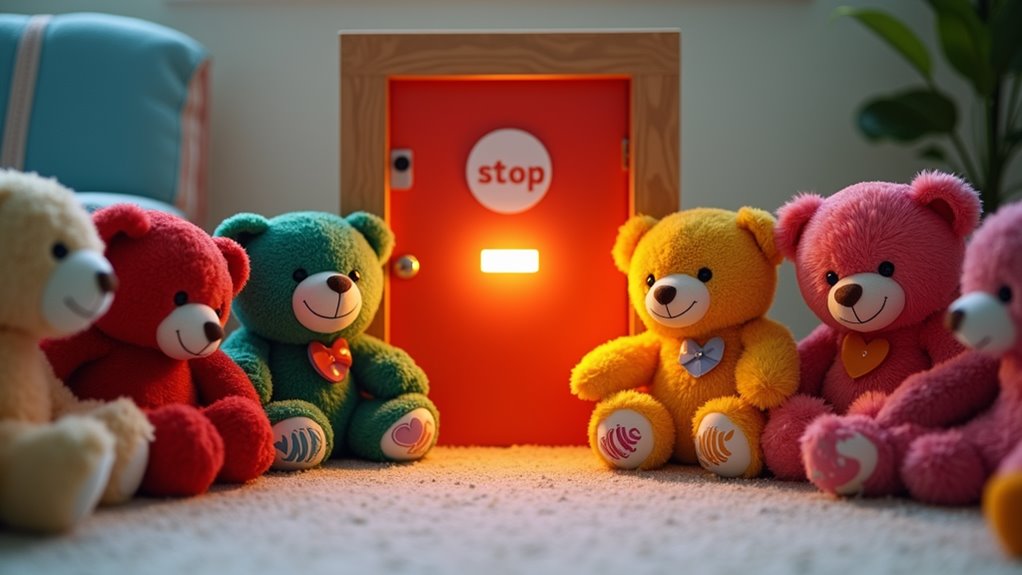
To prepare for dangerous encounters, practicing safety scenarios through role-play can help you develop quick thinking and confident responses.
You’ll want to practice common situations, like someone asking for directions, offering candy, or claiming your parents sent them to pick you up. With a trusted adult, act out these scenarios and practice using your strongest “NO” voice, running away, and attracting attention from others nearby.
Try role-playing different locations too, like the park, walking home from school, or at the mall.
Make sure you’re comfortable yelling “This isn’t my parent!” or “Help, I need an adult!” during these practice sessions.
Public Place Safety Guidelines
When you’re out in public spaces, staying alert and following key safety practices can make a huge difference in avoiding dangerous situations. You’ll need to remember specific guidelines for different locations, so here’s a helpful breakdown of what to do:
| Location | What to Watch For | Safety Actions |
|---|---|---|
| Mall | Isolated areas | Stay with friends/family |
| Park | Hidden spots | Keep in open areas |
| Parking lot | Suspicious vehicles | Walk with purpose |
| Public restroom | Empty facilities | Use buddy system |
| Bus stop | Unfamiliar people | Stand near others |
Remember to trust your instincts if something doesn’t feel right, and don’t hesitate to seek help from trusted adults like store employees, security guards, or police officers who are there to keep you safe.
Bottom Line
You’ve learned essential tools to stay safe, and now it’s time to put them into practice every day. Remember to trust your instincts, maintain strong boundaries, and keep your safe adult network close. By following these stranger danger guidelines and staying alert in both physical and digital spaces, you’re better prepared to handle unexpected situations. Don’t forget, your safety matters, and you’re never alone in protecting yourself.



